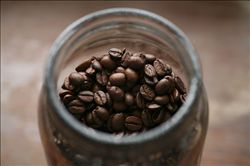Boutique coffee Nicaragua coffee producing area La Sabana, Madriz
Nicaragua Nicaragua 2005 CoE (Cup of Excellence) competition winning coffee beans, that is, the competition winning coffee beans, the output is very small, relatively rare. The appearance is very neat, basically do not need to pick, it is recommended to bake around the middle of the bean, cinnamon roast cinnamon baking degree.
Nicaragua of Nicaragua is known as "the country of volcanic lakes" because of its many lakes and volcanoes. The volcanic soil rich in minerals produces high-quality coffee beans. The most famous coffee produced by volcanic ash soil is Kona kona, Hawaii.
The Cup of Excellence is the most esteemed award given out for specialty coffees. These awards come from a strict competition that selects the very best... The Cup of Excellence competition is selected by the Coffee Competition, an American non-profit organization. Such competitions will last for dozens of days, and only a very small number of coffee beans have been selected as the highest honor after being severely evaluated by coffee judges and world-class professional cup testers. The organizers then auctioned the coffee beans to bidders around the world, and the often fiercely competitive Nicaraguan coffee is among the highest in the world. It is mild and delicious, moderately grained and very fragrant. In many countries, coffee production has been seriously affected for political reasons. Nicaraguan coffee industry is no exception. The 1979 revolution forced coffee planters to flee to Miami. A period of uncertainty followed, when the government considered whether to redistribute land, including many plantations, which led to a shortage of coffee and a decline in production, from more than 1 million bags in the early 1970s to less than 600000 bags in 1990. Now the government has opened up the coffee industry and private owners have taken control of the market. The best Nicaraguan coffee is grown in the north and middle of the country, and the best coffee is produced in Jinotega and Nuevo Segovia in Matagalpa. The finest Nicaraguan coffee is classified as Middle Estrich Tamant Altura (Central Estrictamendte Altura) coffee, which has moderate acidity, delicious aroma and is very lovable. Coffee beans of poor quality are widely used to mix coffee.

Important Notice :
前街咖啡 FrontStreet Coffee has moved to new addredd:
FrontStreet Coffee Address: 315,Donghua East Road,GuangZhou
Tel:020 38364473
- Prev

Boutique coffee Nicaraguan coffee flavor chocolate, red fruit, juice feeling
Nicaragua Nicaragua 2005 CoE (Cup of Excellence) competition winning coffee beans, that is, the competition winning coffee beans, the output is very small, relatively rare. The appearance is very neat, basically do not need to pick, it is recommended to bake around the middle of the bean, cinnamon roast cinnamon baking degree. Nicaragua, Nicaragua, because of many lakes and volcanoes, there are volcanic lakes.
- Next

Boutique coffee Nicaraguan coffee quality red bourbon coffee quality coffee practice
Nicaragua Nicaragua 2005 CoE (Cup of Excellence) competition winning coffee beans, that is, the competition winning coffee beans, the output is very small, relatively rare. The appearance is very neat, basically do not need to pick, it is recommended to bake around the middle of the bean, cinnamon roast cinnamon baking degree. Nicaragua, Nicaragua, because of many lakes and volcanoes, there are volcanic lakes.
Related
- Does Rose Summer choose Blue, Green or Red? Detailed explanation of Rose Summer Coffee plots and Classification in Panamanian Jade Manor
- What is the difference between the origin, producing area, processing plant, cooperative and manor of coffee beans?
- How fine does the espresso powder fit? how to grind the espresso?
- Sca coffee roasting degree color card coffee roasting degree 8 roasting color values what do you mean?
- The practice of lattes: how to make lattes at home
- Introduction to Indonesian Fine Coffee beans-- Java Coffee producing area of Indonesian Arabica Coffee
- How much will the flavor of light and medium roasted rose summer be expressed? What baking level is rose summer suitable for?
- Introduction to the characteristics of washing, sun-drying or wet-planing coffee commonly used in Mantenin, Indonesia
- Price characteristics of Arabica Coffee Bean Starbucks introduction to Manning Coffee Bean Taste producing area Variety Manor
- What is the authentic Yega flavor? What are the flavor characteristics of the really excellent Yejasuffi coffee beans?

